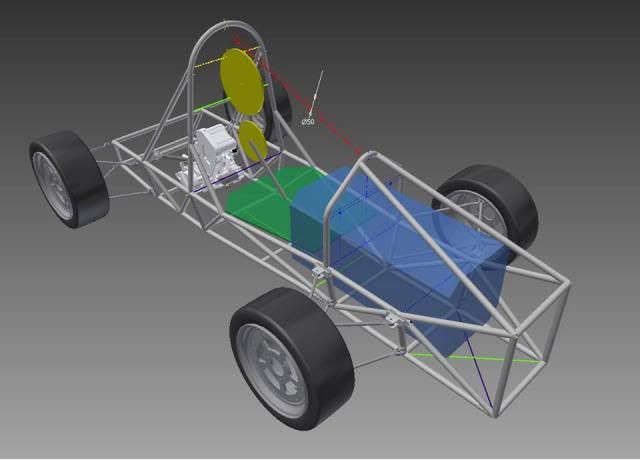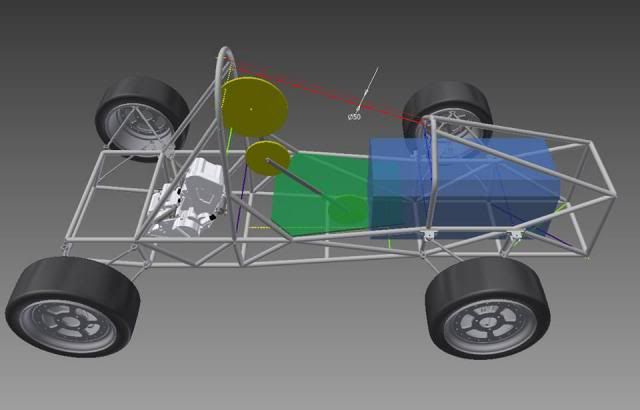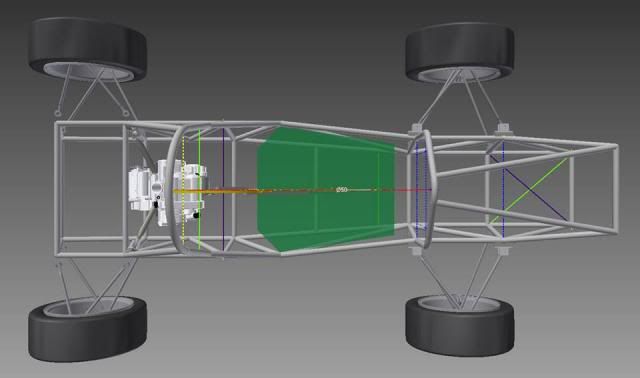Jonny,
First the good news.
I agree with Jay that your approach of "build first..." is good for an inexperienced team like yours. As noted, getting the other students motivated by having something real to sit in can be a huge factor in improving your end-of-year results. The fact that you are also ready to modify whatever you have built, based on what you have learnt from the last build (eg. not enough foot/elbow/engine room, or whatever...) is also good.
The truth is (IMO), MS tubing is dirt cheap, and the build time doesn't cost much either (especially while you are enjoying it), so you will be learning far more by following your approach than by sitting in front of some myopic CAD box. In fact, I reckon the only advantage of spending a year looking through the keyhole of a typical CAD system, is that it better prepares you for a future career as a gynaecologist!
~~~o0o~~~
Now the bad news.
The pictures of your first frame are down there with the worst FSAE spaceframes I have ever seen (well, not including the Indian efforts). But your CAD image is EVEN WORSE!
SIMPLIFICATE! Add fewer tubes. Add fewer nodes. Add fewer bends... The tubes that are mandated in the Rules are almost all you need. You are using an engine at the lighter, lower power, end of the spectrum (= the best end, IMO), and hopefully also 10" wheels (?), so you DO NOT NEED the Sydney Harbour Bridge to hold it all together.
Your current frames (built and CAD) have very little torsional stiffness. I know this just by looking at them.Please measure the Nm/deg of your built frame. It only takes about an hour of simple testing to get an answer within 10% (ie. 90+% accurate, which is much better than most team's (non-) number!).
Randomly adding more diagonals won't improve things. A sheet steel floor might help a little, and you need a floor anyway (spot weld in 0.6 - 1.0 mm galvanised sheet). Perhaps increase the diameter of the main longitudinal tubes (top and bottom SIS) to, say, 30-40 mm. Keep them same wall thickness, but make them straighter (just slight outward bow, front to rear).
~~~o0o~~~
Finally, Curtin U came second at FSAE-Oz 2013 with a car that weighed 260-280 kg (with NO driver or fuel!). I believe their overall approach was similar to yours of build->test->improve... (Though much different overall philosophy of four+wings.) So don't worry about your rod-ends being TOO big (maybe a few hundred grams extra, all up?).
Oh, and if you manage to build->test->improve a car that can actually drive 30 kms, at an average speed of ~50 kph, then you will beat half the other teams at Oz-2014. Many of the teams below you will have followed Claude's advice.
Z

|
|



 Reply With Quote
Reply With Quote




